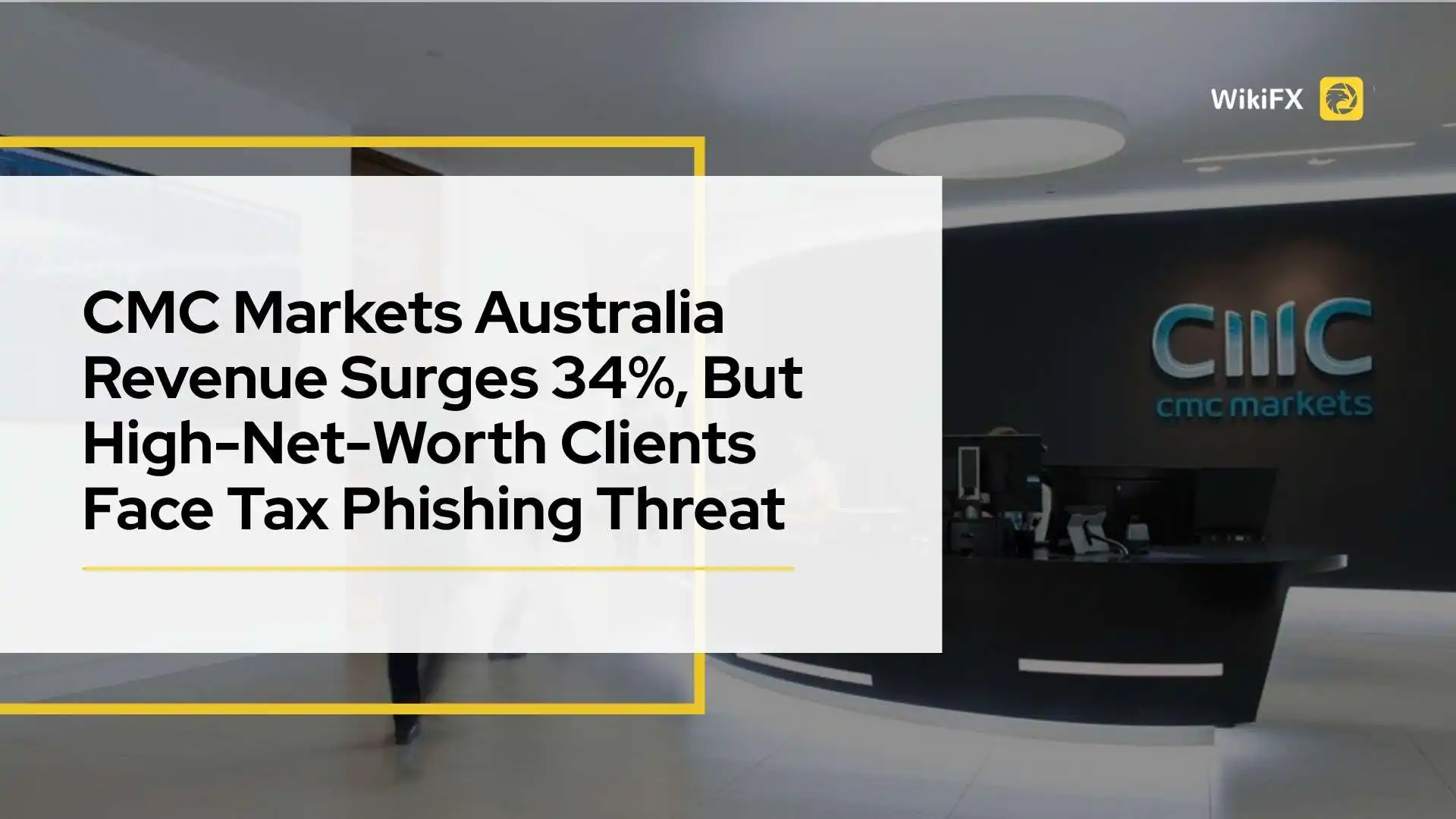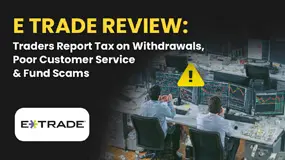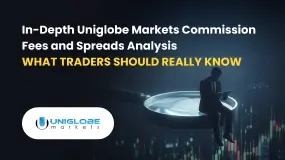简体中文
繁體中文
English
Pусский
日本語
ภาษาไทย
Tiếng Việt
Bahasa Indonesia
Español
हिन्दी
Filippiiniläinen
Français
Deutsch
Português
Türkçe
한국어
العربية
IronFX vs Tickmill: A Detailed Comparison for 2025
Abstract:Discover an in-depth comparison between IronFX and Tickmill, covering regulations, account types, features, and recent cases to guide your trading choices.

When choosing a forex broker, it is essential to understand the various factors that could impact your trading experience. Two well-known brokers in the industry are IronFX and Tickmill. Both brokers offer unique advantages in terms of regulatory frameworks, account types, and trading features. This article will provide a detailed comparison between IronFX and Tickmill based on the latest data available in 2025. We will also discuss recent cases involving these brokers and assess their performance in the current market.
1. Regulatory Framework and Licensing
IronFX is regulated in multiple jurisdictions, ensuring that it operates under strict supervision. The broker holds licenses from:
- CySEC (Cyprus Securities and Exchange Commission) as a Market Maker.
- FCA (Financial Conduct Authority) in the United Kingdom.
- FSCA (Financial Sector Conduct Authority) in South Africa.
This regulatory framework helps instill confidence in clients as it meets compliance requirements in various countries. IronFX has a 7.85/10 rating on WikiFX, reflecting its regulatory oversight and customer satisfaction.
On the other hand, Tickmill is also regulated and holds licenses from the following authorities:
- FCA (Financial Conduct Authority) in the United Kingdom as an STP (Straight-Through Processing) provider.
- CySEC (Cyprus Securities and Exchange Commission) under the Market Maker model.
While both brokers are regulated by CySEC and the FCA, Tickmill tends to have a slightly more favorable reputation due to its higher transparency and its focus on low-cost, commission-based trading.
Key Differences:
- IronFX has additional regulatory coverage in South Africa (FSCA), while Tickmill focuses primarily on Europe and the UK.
- Tickmill offers better transparency regarding its business model, as its an STP provider, which means no dealing desk intervention in client trades.

2. Trading Platforms
Both brokers offer robust trading platforms, but their focus varies slightly.
- IronFX provides MetaTrader 4 (MT4) and MetaTrader 5 (MT5), which are industry-standard platforms known for their reliability, technical analysis tools, and automated trading capabilities. The broker also offers a mobile app for trading on the go.
- Tickmill also offers MT4 and MT5, but it specializes in providing low latency and high-speed execution, which can be an advantage for more experienced traders who are looking for precision in their trades. Additionally, Tickmill is known for its minimal spread and low commission, making it a preferred choice for scalpers.
Key Differences:
- Tickmill focuses on ultra-fast execution and low spreads, ideal for high-frequency traders.
- IronFX offers a wide range of trading tools on its platform, which may be appealing to novice traders.
3. Account Types and Spreads
IronFX offers a variety of account types:
- Standard Account (suitable for retail traders)
- Premium Account (for more experienced traders)
- VIP Account (for professional traders who require advanced features)
However, IronFX is known for charging high spreads and additional fees, which can impact profitability, especially for high-frequency traders.
In comparison, Tickmill offers more cost-efficient accounts with a Zero Spread Account, ideal for traders who prioritize low trading costs. Tickmills commission-based structure ensures that you pay lower spreads but are charged a commission based on the volume traded.
Key Differences:
- IronFX has a wide range of account types, but its spreads can be higher.
- Tickmill offers competitive spreads and low commissions, making it more affordable for active traders.
4. Customer Support
Both brokers provide strong customer support, but the quality can vary based on user experience.
- IronFX offers multi-lingual support via live chat, phone, and email. The feedback is generally positive, although some users report slow response times during peak hours.
- Tickmill also provides 24/5 customer support with live chat, phone, and email. Tickmill is praised for its quick response time and customer service.
Key Differences:
- Tickmill is known for faster customer service, while IronFX may experience delays.

5. Trading Environment and Software Performance
Both brokers offer a solid trading environment, but Tickmill edges out due to its superior software performance and ultra-low latency.
- IronFX reports average transaction speeds of 358.3 ms and higher transaction costs than Tickmill.
- Tickmill offers an AA rating for transaction speed and consistently lower operational costs, making it more competitive for high-frequency traders.
Conclusion
Both IronFX and Tickmill are strong contenders in the forex brokerage industry, but their offerings cater to different types of traders. IronFX is better suited for traders who want a wide range of account types and a comprehensive platform with multiple asset classes. However, it comes with higher spreads and occasional withdrawal issues.
Tickmill, on the other hand, is more focused on providing low-cost trading with tight spreads and low commissions, which makes it ideal for scalpers and high-frequency traders. With a strong reputation for fast execution and excellent customer service, Tickmill is a preferred choice for those looking for a more cost-effective and transparent trading experience.
Ultimately, your choice will depend on your trading style, preferences, and the level of customer service you require.
Ready to start trading? Explore more about IronFX and Tickmill to choose the best broker for your needs and begin your trading journey today!
IronFX Broker's Page:https://www.wikifx.com/en/dealer/4697460442.html
Tickmill Broker's Page:https://www.wikifx.com/en/dealer/0001623491.html

Disclaimer:
The views in this article only represent the author's personal views, and do not constitute investment advice on this platform. This platform does not guarantee the accuracy, completeness and timeliness of the information in the article, and will not be liable for any loss caused by the use of or reliance on the information in the article.
Related broker
Read more

CMC Markets Australia Revenue Surges 34%, But High-Net-Worth Clients Face Tax Phishing Threat
CMC Markets Australia reports a 34% revenue surge. Simultaneously, the company's high-net-worth clients are facing a serious tax-related phishing threat.

E TRADE Review: Traders Report Tax on Withdrawals, Poor Customer Service & Fund Scams
Has your E Trade forex trading account been charged a withholding tax fee? Did your account get blocked because of multiple deposits? Did you have to constantly call the officials to unblock your account? Failed to open a premium savings account despite submitting multiple documents? Is fund transfer too much of a hassle at E Trade? Did you find the E Trade customer support service not helpful? In this E Trade review article, we have shared certain complaints. Take a look!

mBank Exposed: Top Reasons Why Customers are Giving Thumbs Down to This Bank
Do you find mBank services too slow or unresponsive? Do you find your account getting blocked? Failing to access your account online due to several systemic glitches? Can’t perform the transactions on the mBank app? Do you also witness inappropriate stop-level trade execution by the financial services provider? You are not alone! Frustrated by these unfortunate circumstances, many of its clients have shared negative mBank reviews online. In this article, we have shared some of the reviews. Read on!

In-Depth Uniglobe Markets Commission Fees and Spreads Analysis – What Traders Should Really Know
For experienced traders, the cost of execution is a critical factor in broker selection. Low spreads, fair commissions, and transparent pricing can be the difference between a profitable and a losing strategy over the long term. This has led many to scrutinize the offerings of brokers like Uniglobe Markets, which presents a tiered account structure promising competitive conditions. However, a professional evaluation demands more than a surface-level look at marketing claims. It requires a deep, data-driven analysis of the real trading costs, set against the backdrop of the broker's operational integrity and safety. This comprehensive Uniglobe Markets commission fees and spreads analysis will deconstruct the broker's pricing model, examining its account types, typical spreads, commission policies, and potential ancillary costs. Using data primarily sourced from the global broker inquiry platform WikiFX, we will provide a clear-eyed view of the Uniglobe Markets spreads commissions prici
WikiFX Broker
Latest News
WikiFX's New Evaluation of ATM Capital LTD: Does its License Protect the Arab Investor?
How a Fake Moomoo Ad Led to the “New Dream Voyage 5” Scam
Is Axi Legit? A Data-Driven Analysis of Its Regulatory Standing and Trader Feedback
Trive Investigation: High Score, Hidden Risk - The Profit Paradox
In-Depth Uniglobe Markets Commission Fees and Spreads Analysis – What Traders Should Really Know
FXPesa Review: Are Traders Facing High Slippage, Fund Losses & Withdrawal Denials?
CMC Markets Australia Revenue Surges 34%, But High-Net-Worth Clients Face Tax Phishing Threat
Bessent believes there won't be a recession in 2026 but says some sectors are challenged
Young Singaporean Trader Grew USD 52 into a USD 107,700 Portfolio
Is GGCC Legit? A Data-Driven Analysis for Experienced Traders
Currency Calculator



